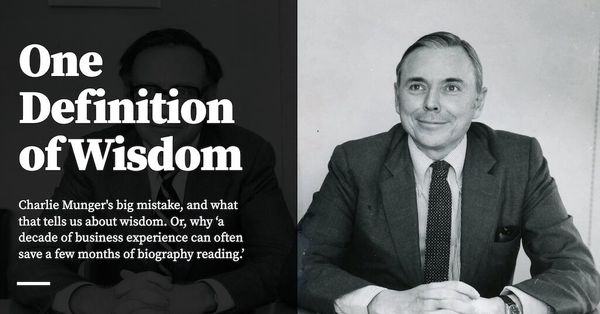In my summary of Amy Hoy’s Just F*cking Ship, I wrote that I hadn't yet tried out the techniques Hoy outlined in her book. Reading self help is dangerous because it's easy to just keep reading without ever taking the time to apply what you've learnt.
(A corollary to this is that you shouldn’t read too many self help books at the same time; you’ll need a few months to put everything you’ve learnt from a book into practice).
I didn’t want to fall into this trap, so two days after publishing that summary, I decided to apply JFS's techniques to a long-overdue project of mine: an education site called Management For Startups.
That site launched on Saturday; this is a writeup of what surprised me as I applied Hoy’s techniques.
The Backwards Plan Really Works
A huge part of JFS is this idea of creating a ‘backwards plan’, coupled with a deadline that is taken seriously. Hoy’s primary analogy is the Thanksgiving dinner: to prepare a Thanksgiving dinner, you’ll need an actual deadline (“come over at 7pm!”) plus you’ll need a plan for prepping the dishes you’ve decided to serve.
Hoy asserts that roast dinners are simple to plan: you decide on the dishes and then you work backwards to figure out what you need to cook, when to cook them, and what to buy from the supermarket. Similarly, Hoy recommends that you sit down and work backwards to the individual tasks you’ll need to do in order to ship that first version of your product.
The first step is to articulate a crispy vision of what that first version looked like — and this I did; I sat down one morning with coffee, pen and paper, and wrote out what I expected to ship.
I’d done a bit of work already just building out the site and setting up the blog, but the entire project wasn’t ready to attract readers the same way Commonplace was. I decided that I wanted a section for new managers (where I’d put up my tentpole piece of content: the MFS Starter Manager Guide) and I wanted a page for experienced managers that organised the topics I intended to cover on the MFS blog.
Since I was adapting this from a course I used to teach in my previous company, the set of topics I intended to cover wasn’t difficult to figure out, but I selected only five for launch. This was me applying JFS’s 12th technique: ‘Choose Your Difficulty Setting’.
I could have chosen to ship with the full list of topics — of which there were more than 10 — but I realised that shipping a full list would have meant more time writing posts for each topic. I also knew I wouldn’t be comfortable with several topics sitting empty on the topic page. So cutting the list of topics it was!
Seeing Cards Pile Up in the Done List was Motivating
After settling the requirements, I wrote everything up as story cards and created a project workboard in Phabricator — my project management tool of choice. (This was from JFS’s technique 8: ‘Track Your Progress’; Phabricator’s workboards are like Trello, but for programmers). Here’s what that looked like:

In the end, I couldn’t finish the Starter Manager Guide on time, so I just shipped anyway and slapped on an email subscription form on the page.
I expect to be done with the guide by the end of the week.
Here’s what surprised me: in the past, I’d marked stories in my workboard’s ‘Done List’ as completed, which caused them to vanish. In JFS, Hoy suggests doing this differently: she says you should let the tasks pile up visibly in the Done list. Why? Well, she asserts that having a visual representation of your completion state is way more effective at cultivating motivation and creating a sense of progress.
To my surprise, this little tweak worked. I found myself opening the workboard every morning, happy and encouraged as cards slowly piled up on the right.
It’s Still Psychologically Difficult to Ship When You Haven't Finished Everything
In the end, I considered pushing the deadline back as I realised I could not complete the full Starter Manager Guide on time.
What this looked like was that I fought with myself for most of Saturday over whether I should ‘launch’ with what I had. Launching in this case meant telling people about it; this was a symbolic gesture designed to make me feel like the site was now publicly available. (The site was already deployed; I'd written a deployment script a few days in advance).
In the end, I decided to just f*cking do it, and sent a couple of friends the link. I also tweeted about it, albeit in an existing Twitter thread.
That was good enough for me.
I guess that I’ve learnt two lessons here: first, get better at setting reasonable deadlines. Hoy mentions in the book that this is something to watch out for; I’m going to apply JFS to the next thing I’m shipping and I’m expecting that I’d get better at it.
The second lesson is that I need to do the psychological work of figuring out what’s truly necessary to ship before I hit the day of the deadline itself. I could have saved myself a ton of angst on Saturday and just defaulted to what I eventually did (which was to put up a mailing list signup call-to-action on the incomplete guide). Developing a plan B would have made it less stressful overall to just ship.
Again, this was mentioned in the book, but there’s a reason theory and practice are different. There's a reason why putting self-help books to the test matters.
Lessons Learnt: Do Marketing First
To be honest, I felt like a failure here: I should have shipped the MFS site wayyy before November.
I started work on MFS around July. The bulk of my time was spent writing the management course before I set up the actual website. I had racked up over 16k words before switching gears and starting on web development; if I were to do it all over again, I'd have started with the site, and then worked backwards towards the course.
This isn't the last time I'm going to apply JFS. I intend to double back and apply these techniques to other things at MFS. But I also intend to reduce the scope, to make the entire thing more shippable. I'll probably sell a small guide, instead of the full course. My new deadline: the end of the month.
If I could sum my JFS experience in a single sentence, I'd say that I've learnt this: set a deadline and be serious about it, develop a backwards plan, and then manage your emotional state to always feel like you’re making forward progress.
Originally published , last updated .





